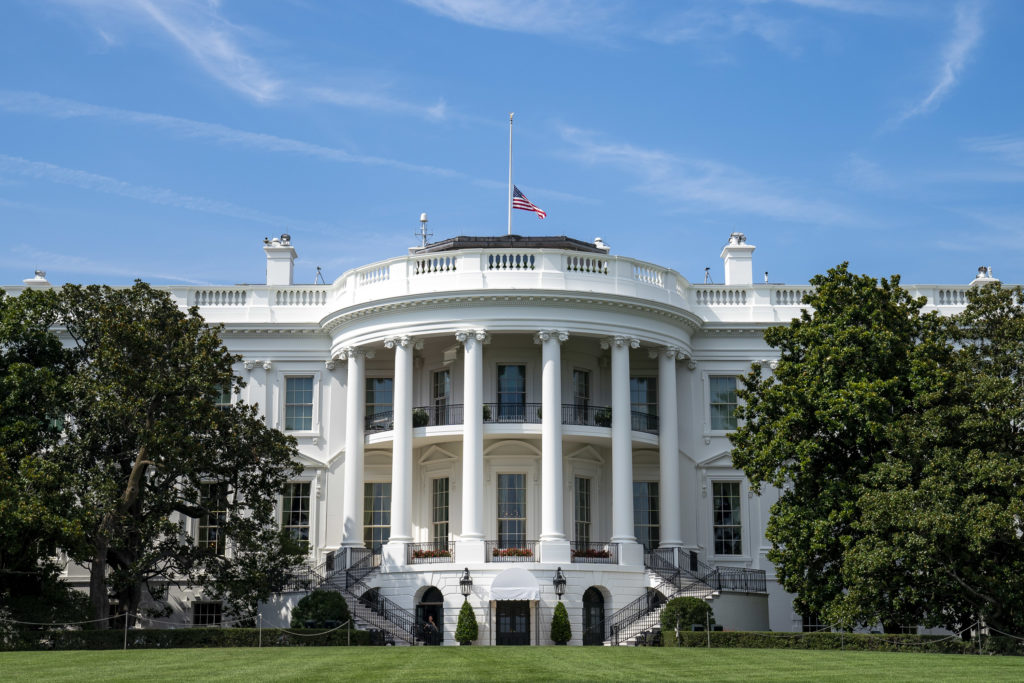How Has Sri Lanka’s Crisis Impacted Indian Ocean Security?
Sri Lanka’s economic collapse will have ramifications that stretch beyond its own borders. How should the U.S. consider the effects of the crisis on its own regional interests?

Published by The Lawfare Institute
in Cooperation With

Sri Lanka’s economy has collapsed, and the country is seeking a bailout from the International Monetary Fund. Its top leaders have been forced to resign—and, in the case of its president, flee the country—after mass protests swept the island nation. Sri Lankan citizens continue to endure high prices and limits on access to food, cooking gas, fuel, electricity, and medical supplies.
At this point, it is also worth examining the ramifications of this crisis beyond the borders of Sri Lanka. So how should the U.S. consider potential impacts on its own interests—and on Indian Ocean security more broadly?
The immediate effects of Sri Lanka’s domestic crisis on the region appear so far to be limited to trade. The island nation sits along the main east-west sea lanes in the Indian Ocean and welcomes visiting ships mostly in Colombo port, which is the busiest transshipment port in South Asia and a key supply chain hub. Colombo saw a drop in container volume in June, following the shocks of the country’s debt default in April and the prime minister’s resignation in May. Earlier this year, the port was backlogged in part due to fuel shortages that slowed the number of trucks able to transport containers of goods, thus prompting some shipping companies to divert cargo to Indian ports and disrupting supply chains abroad.
The impact on regional security is harder to assess, but so far it appears to be minimal. Since the onset of the domestic crisis, the once-frequent reports of naval ship visits in local media have declined in frequency, which raises the question of whether foreign naval crews had been avoiding visits to Sri Lanka due to this difficult time for the country. However, two visits in August are making news. One is a Pakistan Navy ship that arrived in Colombo port on Aug. 12. Receiving greater attention has been China’s Yuan Wang 5 ship, which arrived in Hambantota port on Aug. 16—a newsworthy event, as Sri Lanka is permitting a first-time Chinese visit here. The visit is especially notable given the controversy shrouding Hambantota: Back in 2017, the Chinese-built-and-financed port was leased to a Chinese-majority joint venture to operate for a term of 99 years.
Observers will need to monitor these trends in the economic and security domains. The political situation in Sri Lanka continues to be contentious, with an unpopular president who was elected by parliament—not the public—and who supported the use of police and army forces to break up the main protest site. Furthermore, cuts to military spending may be required under the austerity measures that Sri Lanka will need to implement to fix its economy. This could impact the capability of Sri Lanka’s maritime forces to monitor its exclusive economic zone. Cuts in military spending could also hamper the capacity of the country’s navy and coast guard to conduct maritime security missions such as marine pollution response operations near busy Indian Ocean sea lanes, search and rescue of ships in distress, and prevention of illegal migration and human smuggling—a topic of increasing concern to India, Australia, and other Indian Ocean countries considering Sri Lankans who are desperate to leave the country.
So what does all of this mean specifically for U.S. interests in the region? U.S. security strategy in the Indian Ocean reflects a combination of long-standing requirements and evolving priorities for U.S. national strategy in an era of great power strategic competition between the U.S. and both China and Russia.
Two U.S. objectives can be identified clearly. The first is protecting the free flow of commerce. This region is strategically important for the flow of containers, bulk cargo, and hydrocarbon traffic that is critical for the global economy. The commanders of U.S. Naval Forces Central Command in Bahrain often speak about securing the free flow of commerce as a clear goal. The second U.S. objective in the region is maintaining military access in the Indian Ocean, given that the U.S. is an extraregional power with no local territories. Even after Mauritius achieved a series of legal and diplomatic victories in international fora in its territorial dispute with the U.K. over the Chagos Islands, Diego Garcia—a militarized island in the central Indian Ocean—continues to be a vital base for American and British military forces.
Most importantly, however, these two objectives are in service of a larger interest: to ensure that the Indian Ocean does not assume greater priority for the U.S. than the increasingly interconnected Pacific, Arctic, and Atlantic theaters. The U.S. military must continue to plan for the possibility of a future war in the western Pacific. Meanwhile, Russia’s invasion of Ukraine highlights a trend that was occurring even before February. It’s evident that the U.S. has shifted greater attention to the defense of the Atlantic and Arctic oceans. For example, the U.S. Second Fleet, which seeks to “[d]efend maritime avenues of approach between North America and Europe,” was reestablished in 2018. Strikingly, all of the U.S. military services have Arctic strategies: the Navy and Marine Corps, Air and Space Forces, Army, and Coast Guard each recognize the region’s significance for national security. And the war in Ukraine has resulted in greater attention to European waters such as the Black Sea and wider changes to U.S. force posture in Spain, Poland, Romania, Baltic countries, the U.K., Germany, and Slovakia.
While the U.S. seeks to operate globally, this combined Pacific-Arctic-Atlantic theater registers greater priority than do the more distant waters of the Indian Ocean. Efforts such as “the Quad” permit the U.S. to engage in important strategic campaigning in the wider Indo-Pacific on issues such as maritime domain awareness and climate change, but the Indian Ocean segment remains a lesser priority. For example, no Indian Ocean region command (IORCOM) or fleet has yet emerged to consolidate areas of responsibility that currently fall across three combatant commands. Even the 2018 name change from Pacific Command (PACOM) to Indo-Pacific Command (INDOPACOM) did not result in a change in area of responsibility.
In other words, the Indian Ocean needs to remain a lesser priority for the U.S. as it juggles limited resources to apply globally in a new era of strategic competition. Given this focus, it is worth identifying wildcards that may complicate U.S. security interests in the Indian Ocean. Beyond the obvious ones, such as additional Chinese basing and gray zone activities in the Indian Ocean, the crisis in Sri Lanka suggests the potential for domestic crises in strategically located countries to have reverberations in the region.
During the crisis, Washington has given Sri Lanka humanitarian and agricultural assistance and provided loans to the country’s private sector. But more can be done before the emergence of such crises in Sri Lanka and other countries through U.S. development and financial efforts. Beyond bilateral assistance, the U.S. could leverage its influence on behalf of smaller states in multilateral institutions, such as the International Monetary Fund, the World Bank, and the G7 with its new Partnership for Global Infrastructure and Investment.
Ultimately, the U.S. does not seek a reduction in its Indian Ocean presence, as is evidenced by the Defense Department’s news release about the results of the Global Posture Review. Further, the U.S. has economic interests in preserving the free flow of commerce. Yet Washington does have growing requirements in the combined Pacific-Arctic-Atlantic theater. Moving forward, U.S. policymakers will need to preemptively manage potential wildcards in order to keep crises from erupting in the vast Indian Ocean that would divert U.S. attention and resources away from other regions. The events in Sri Lanka are a timely reminder of the importance of this priority for the coming years of strategic competition.





